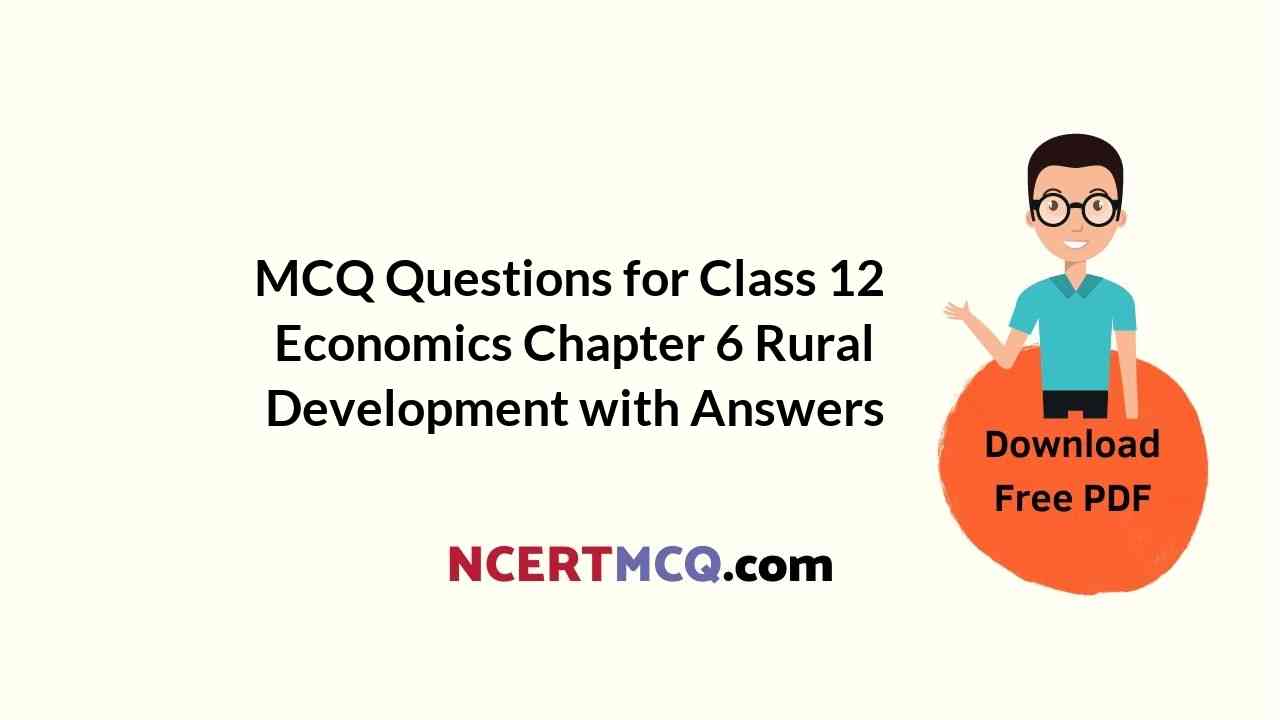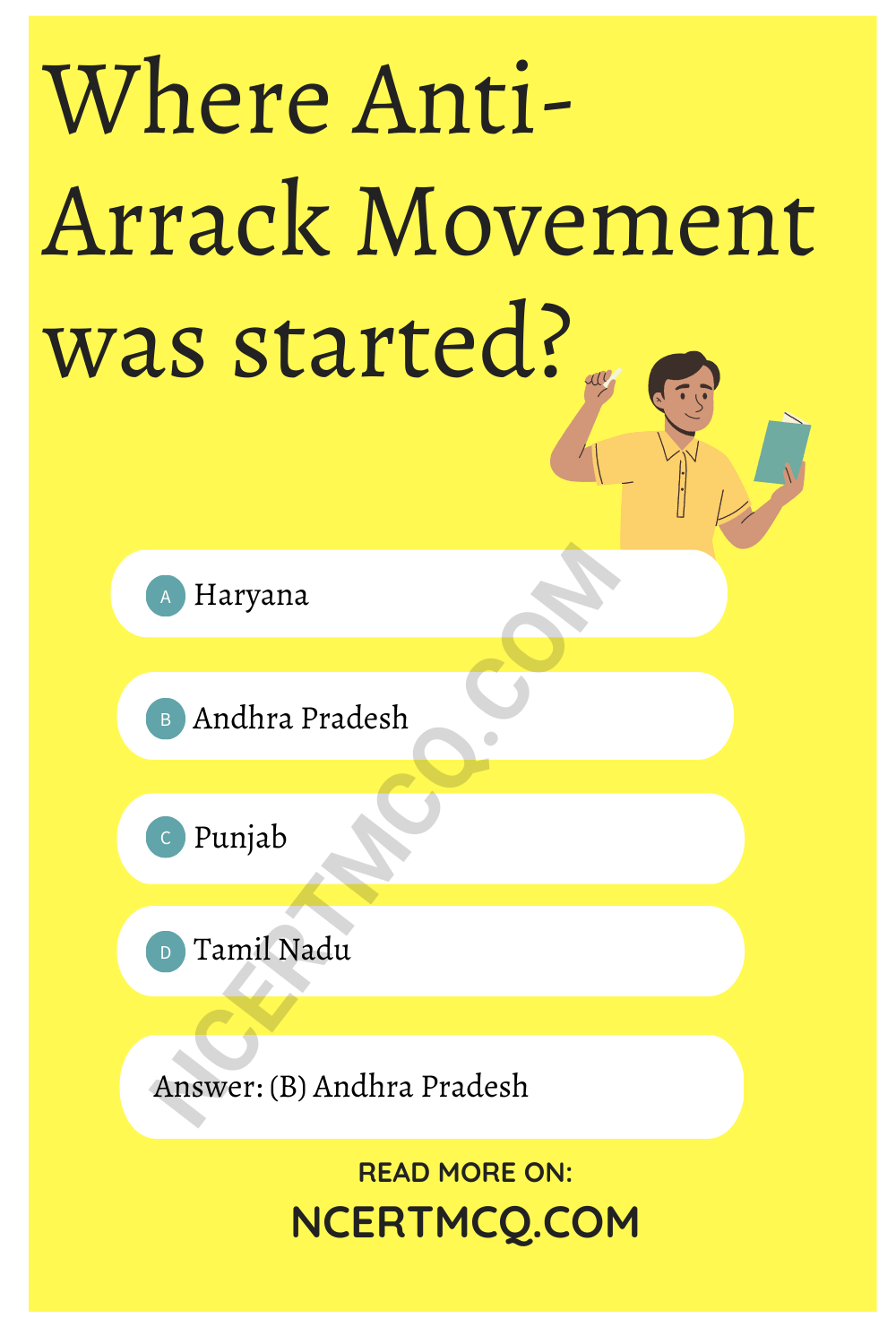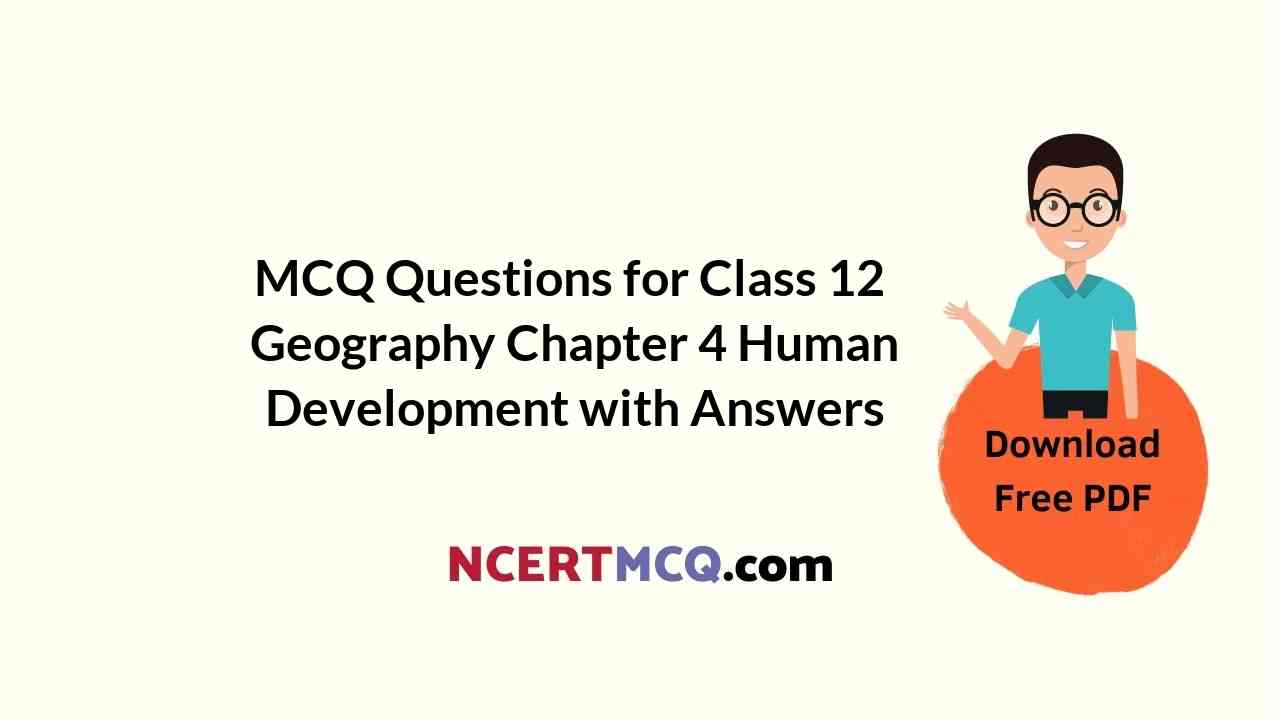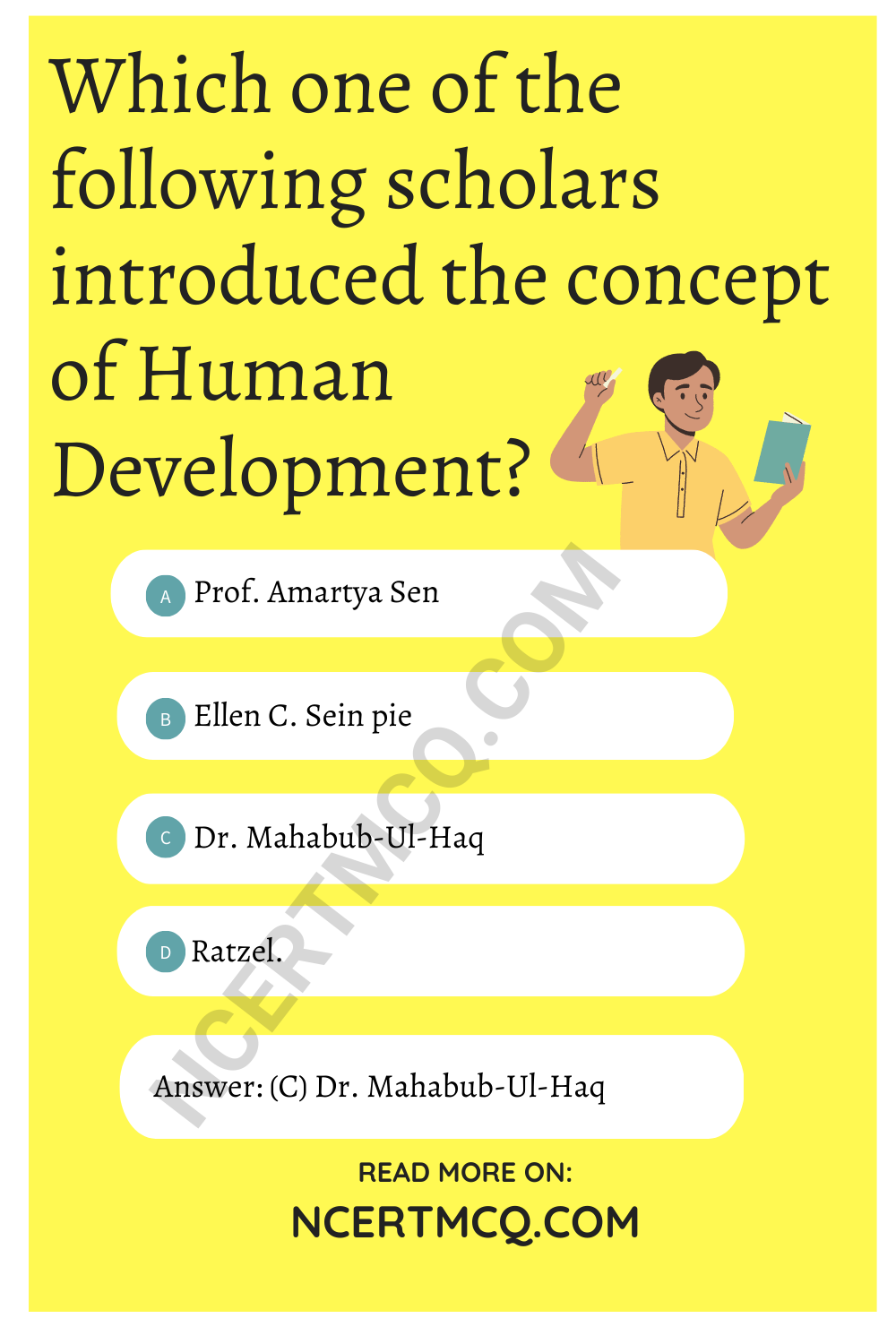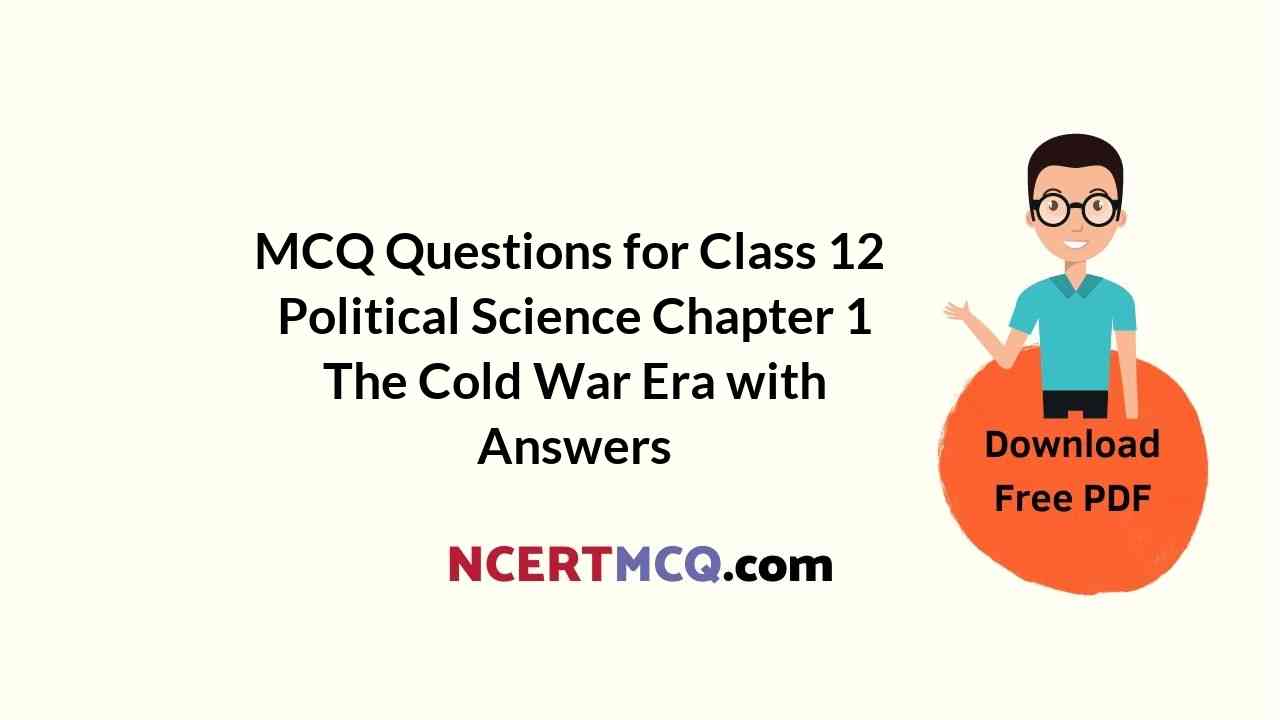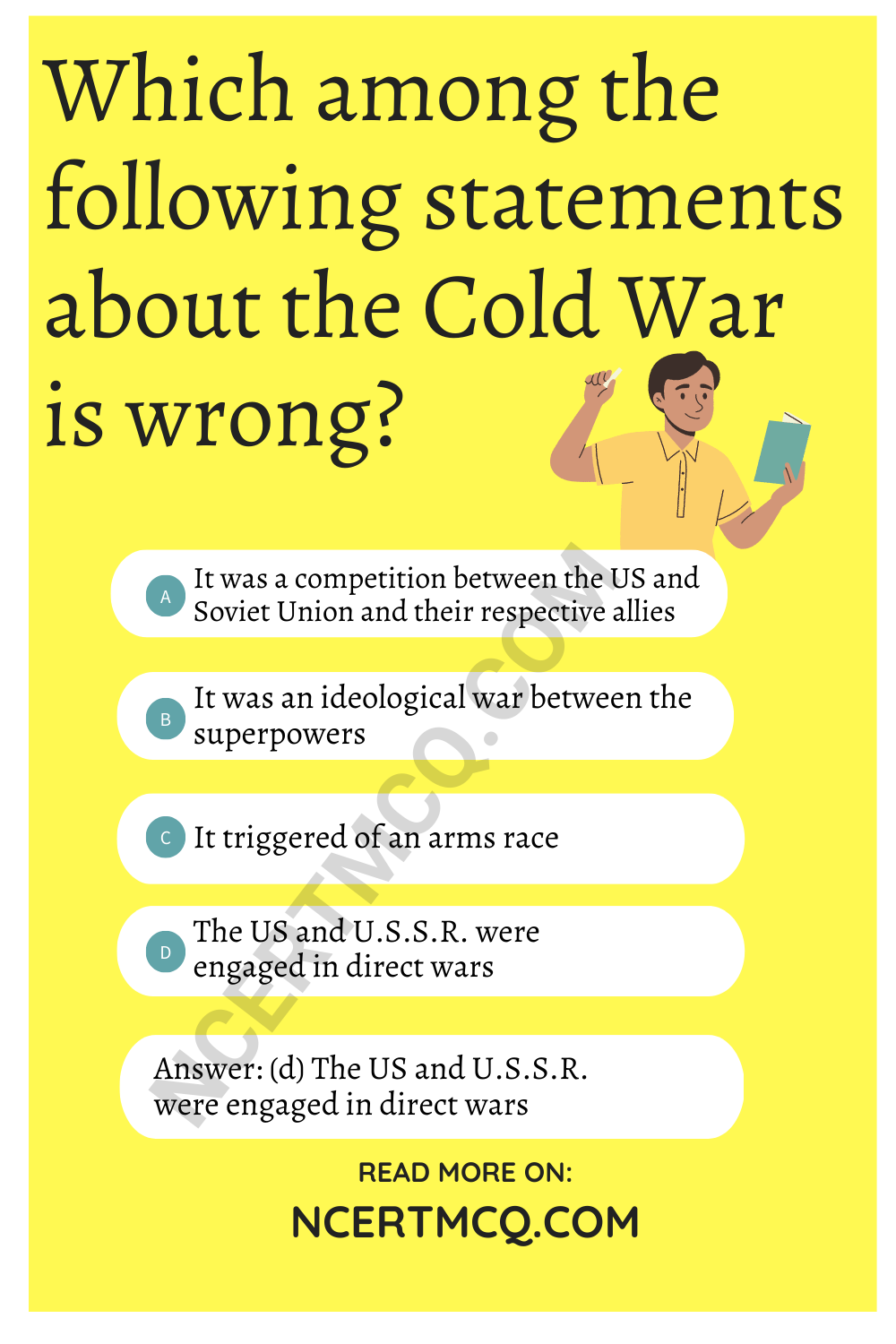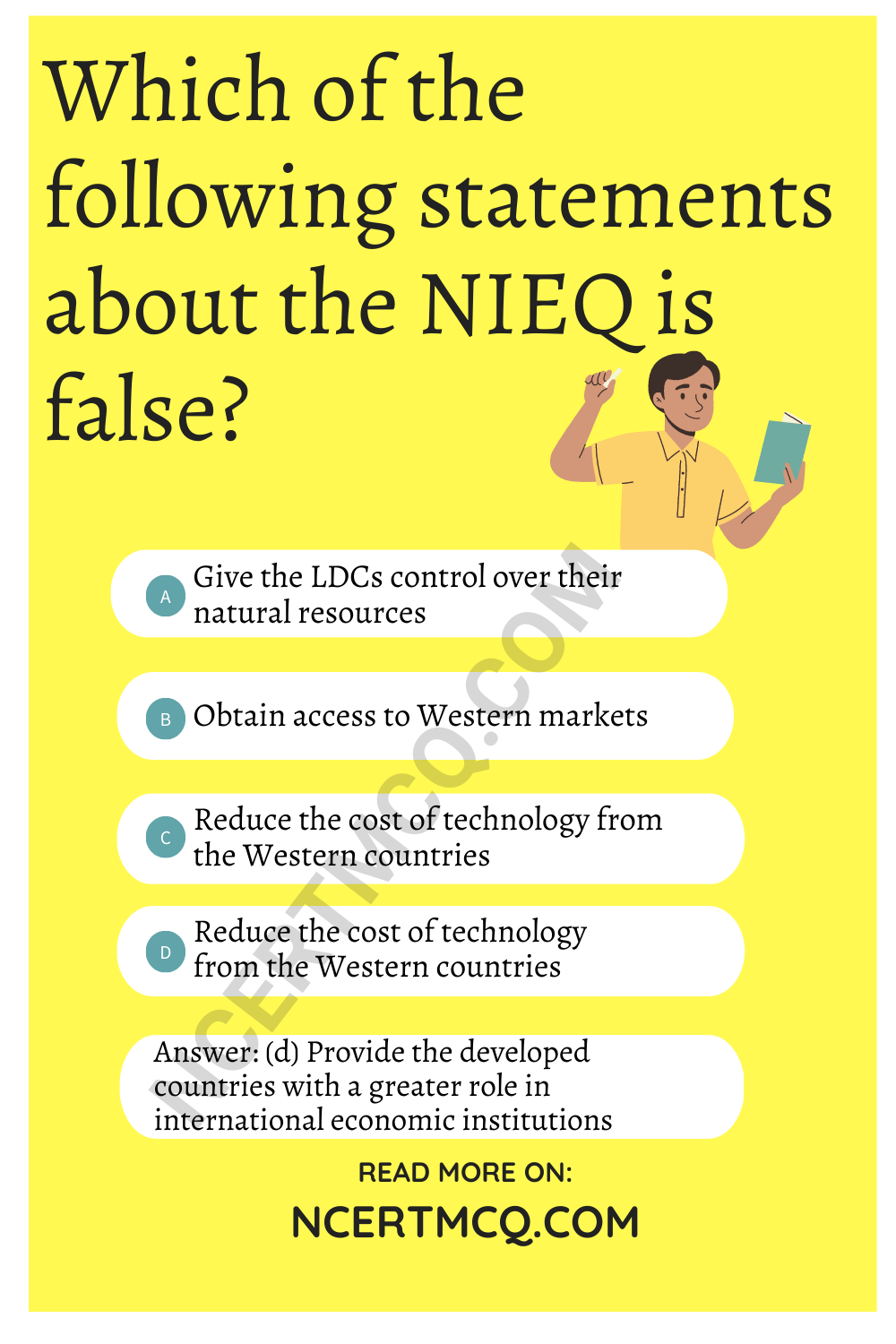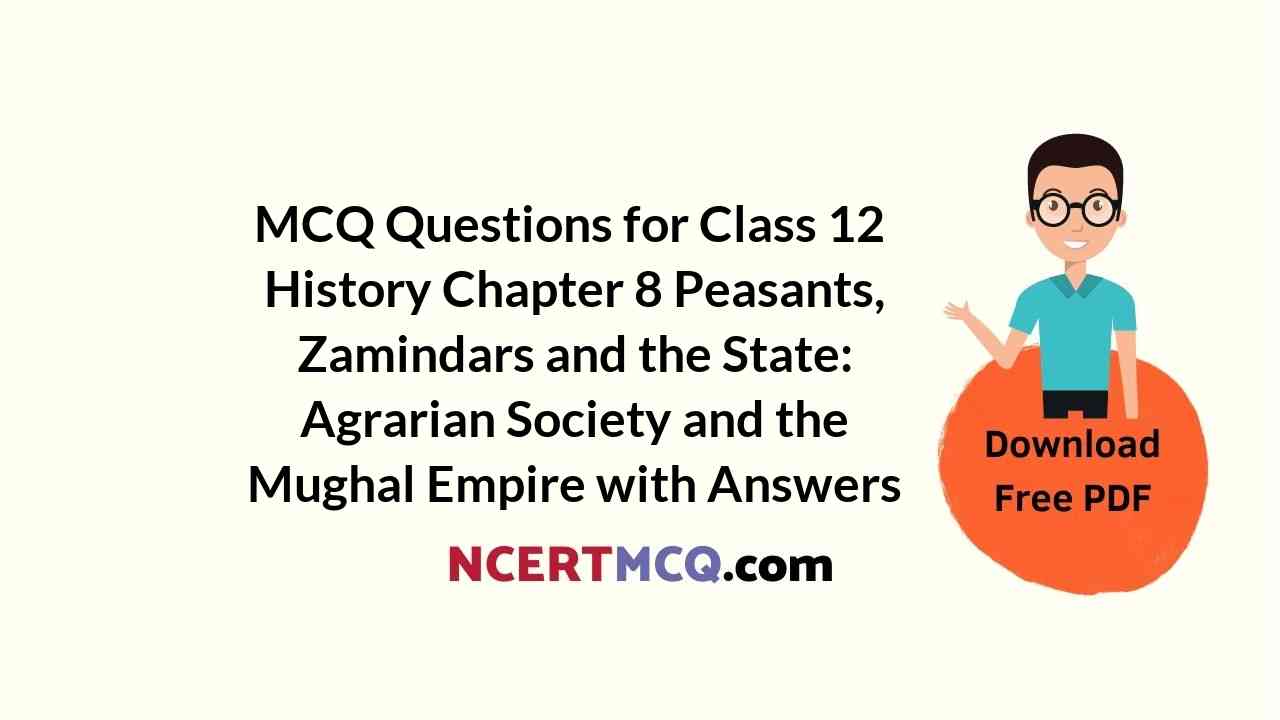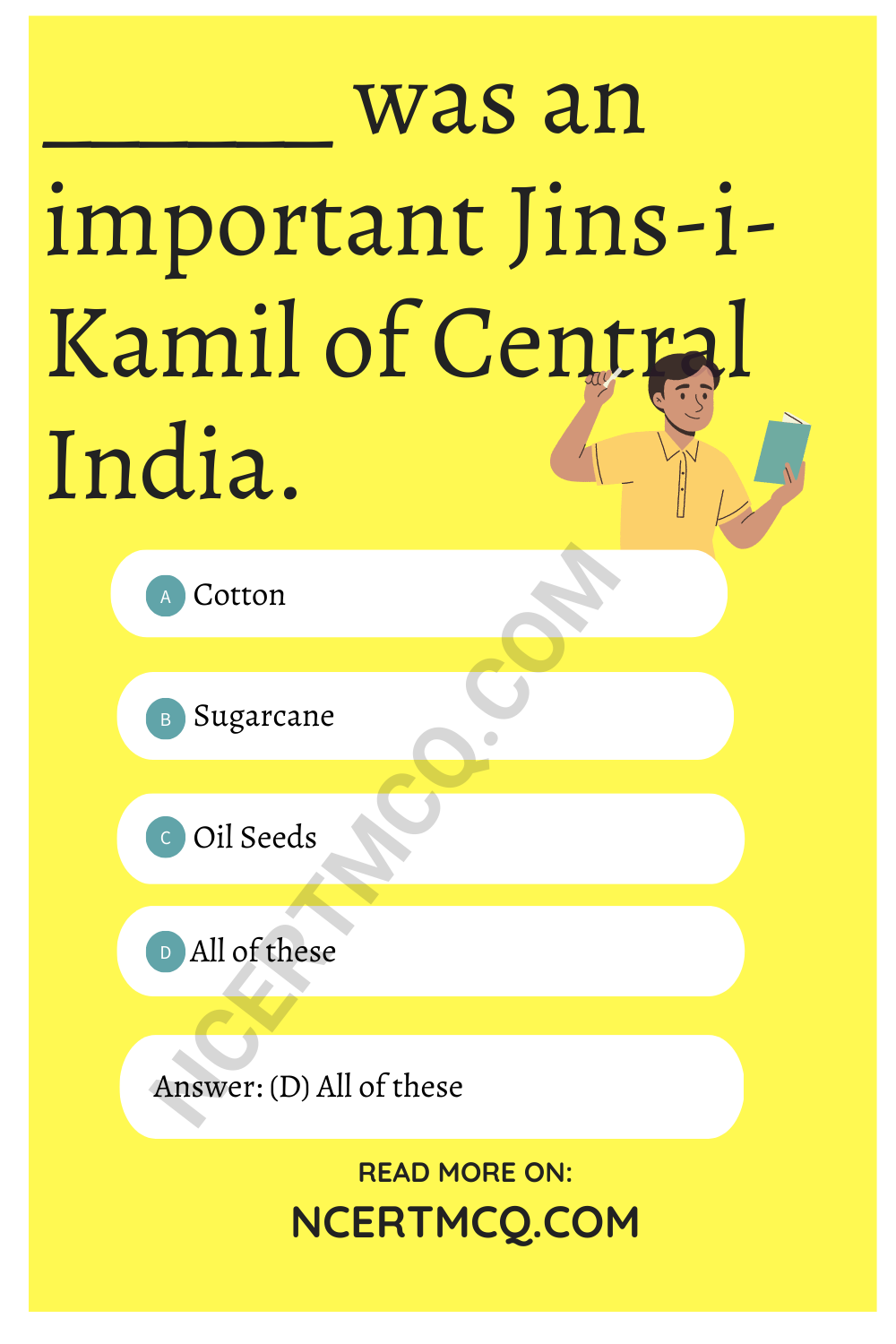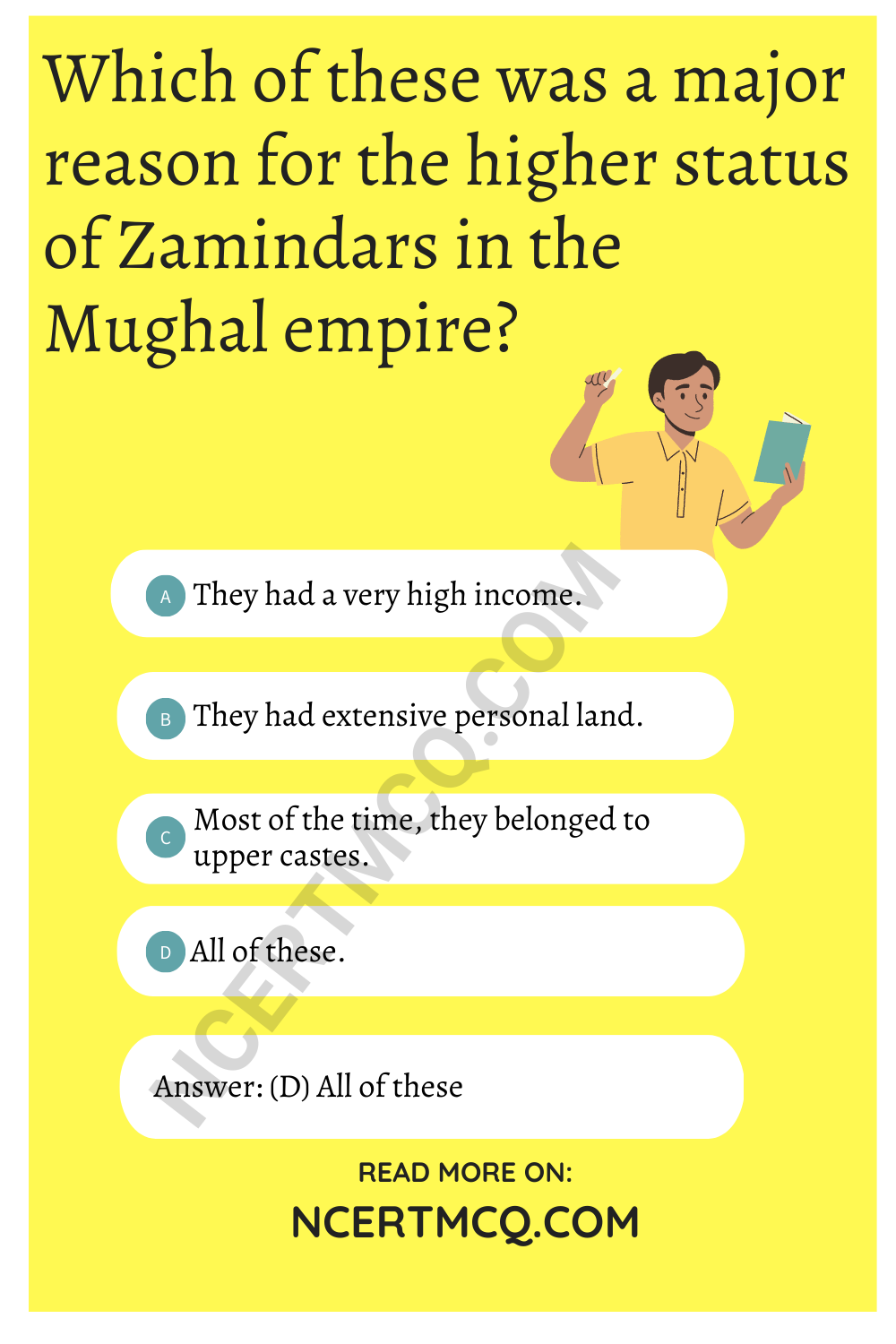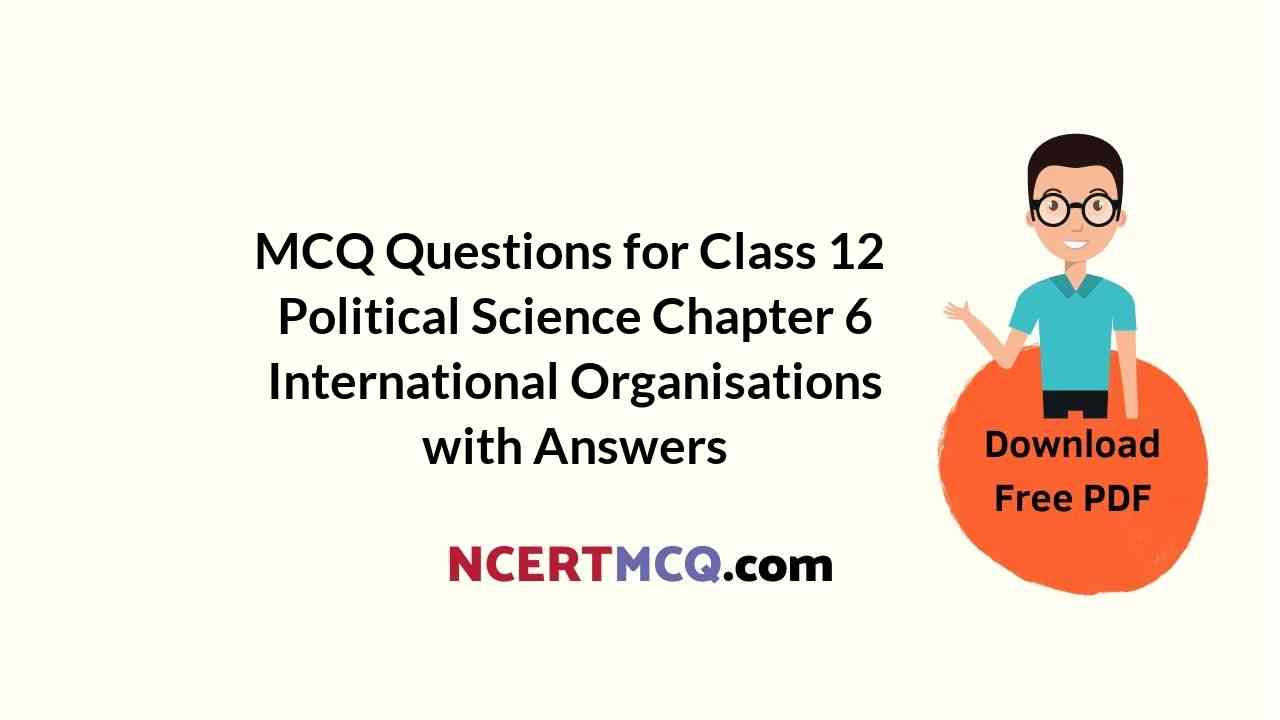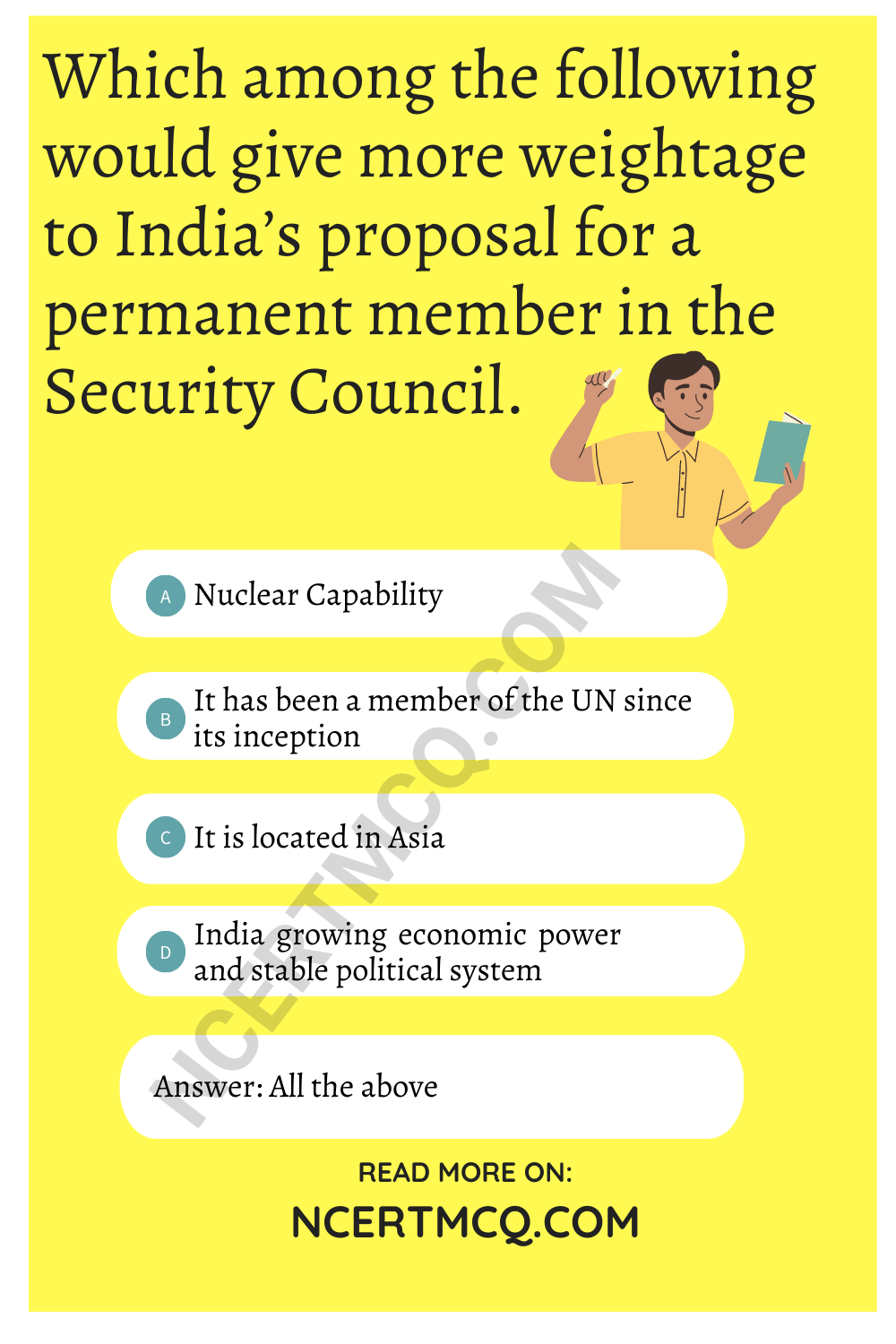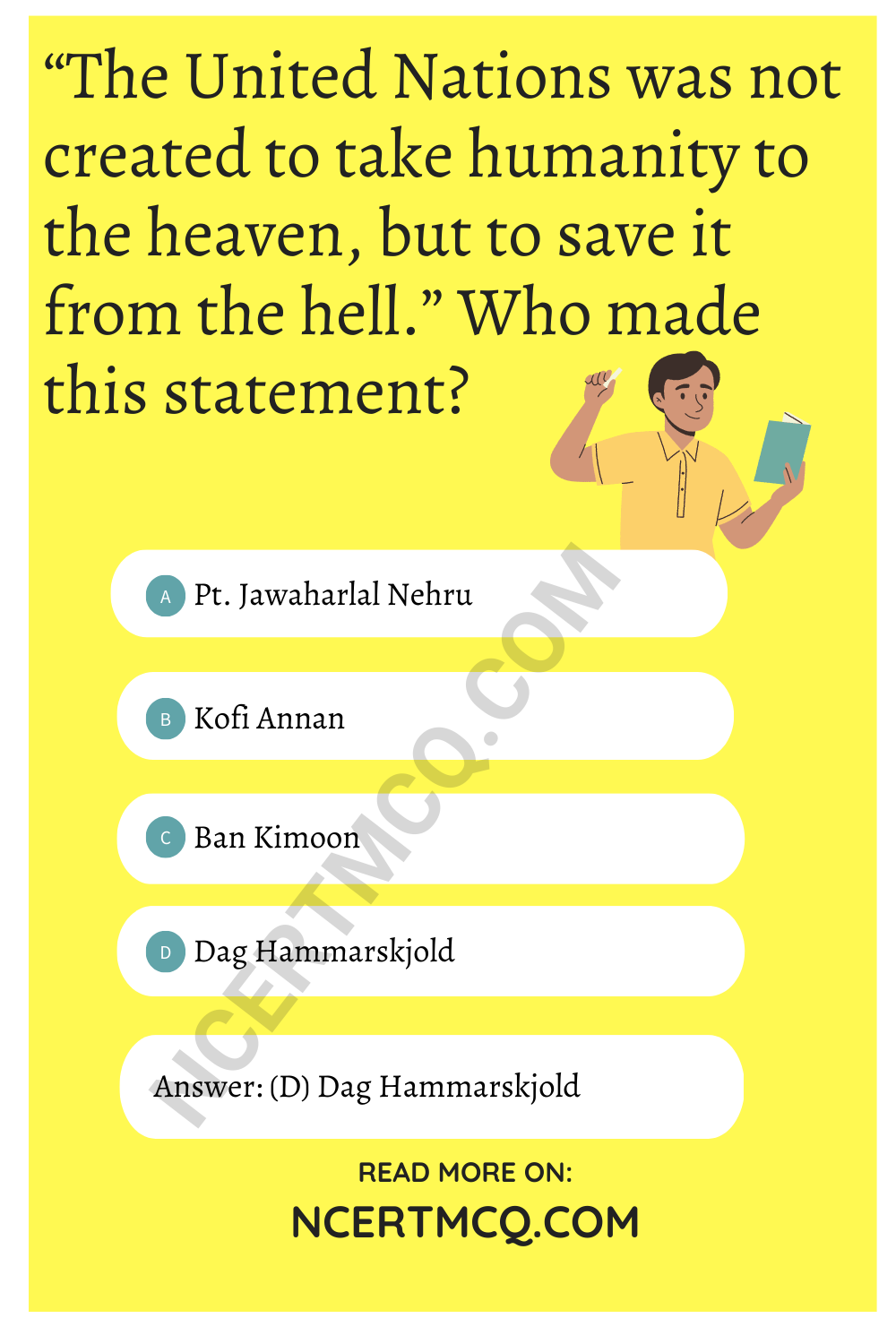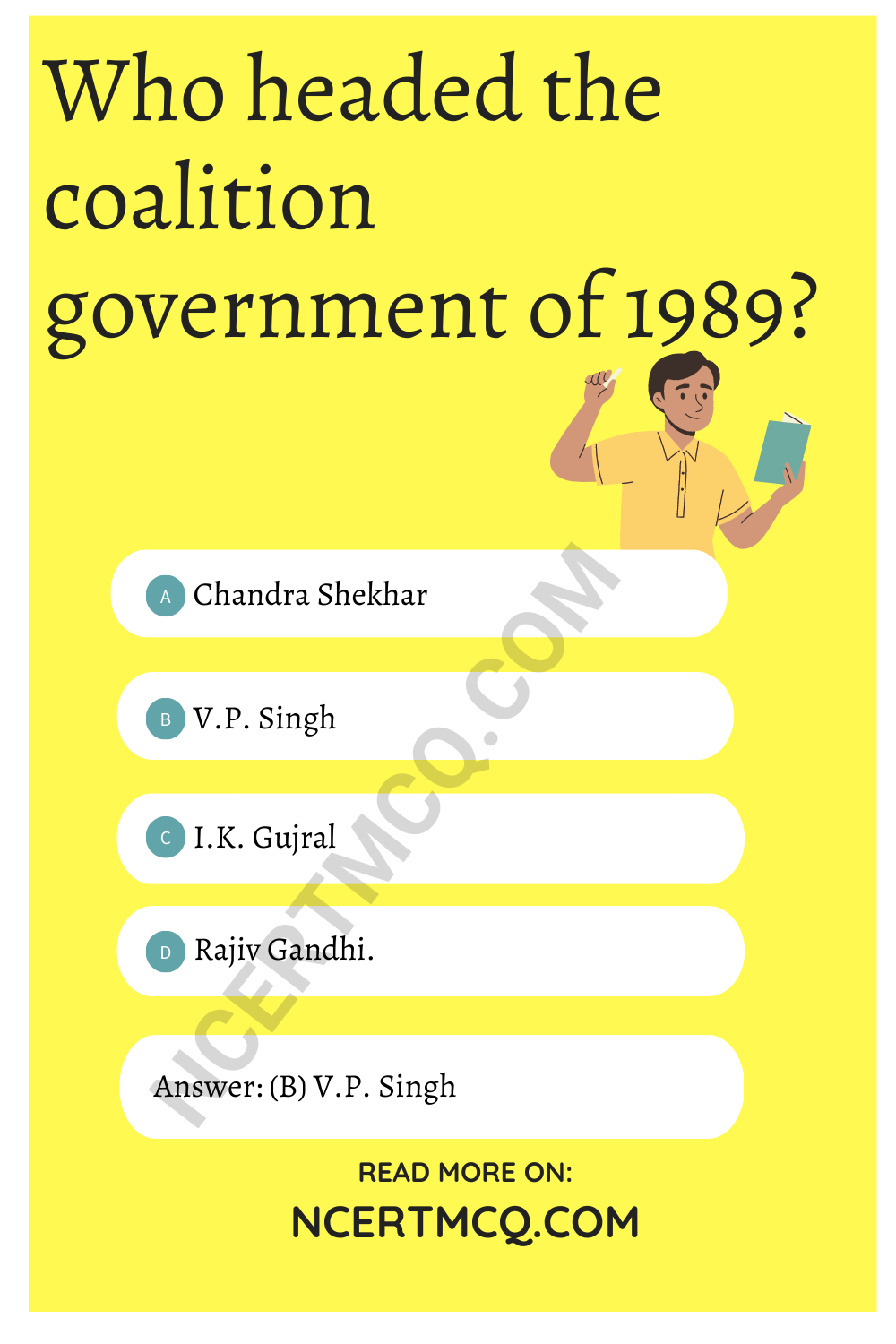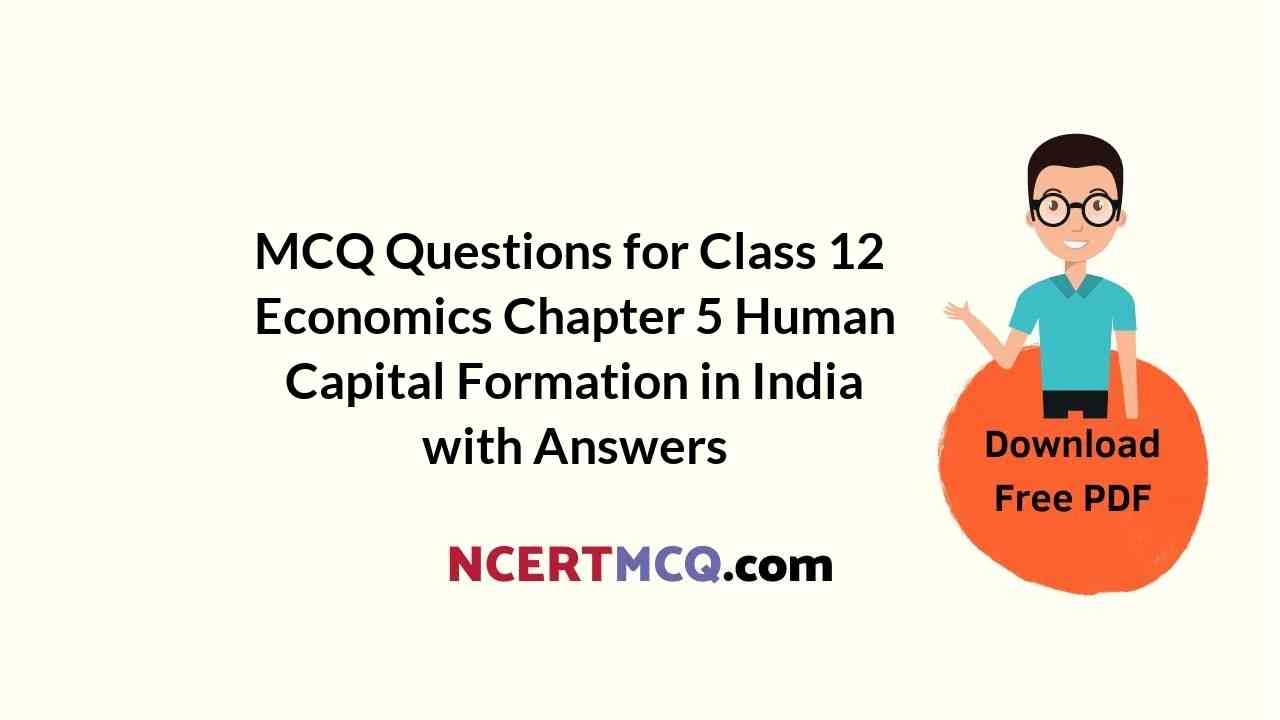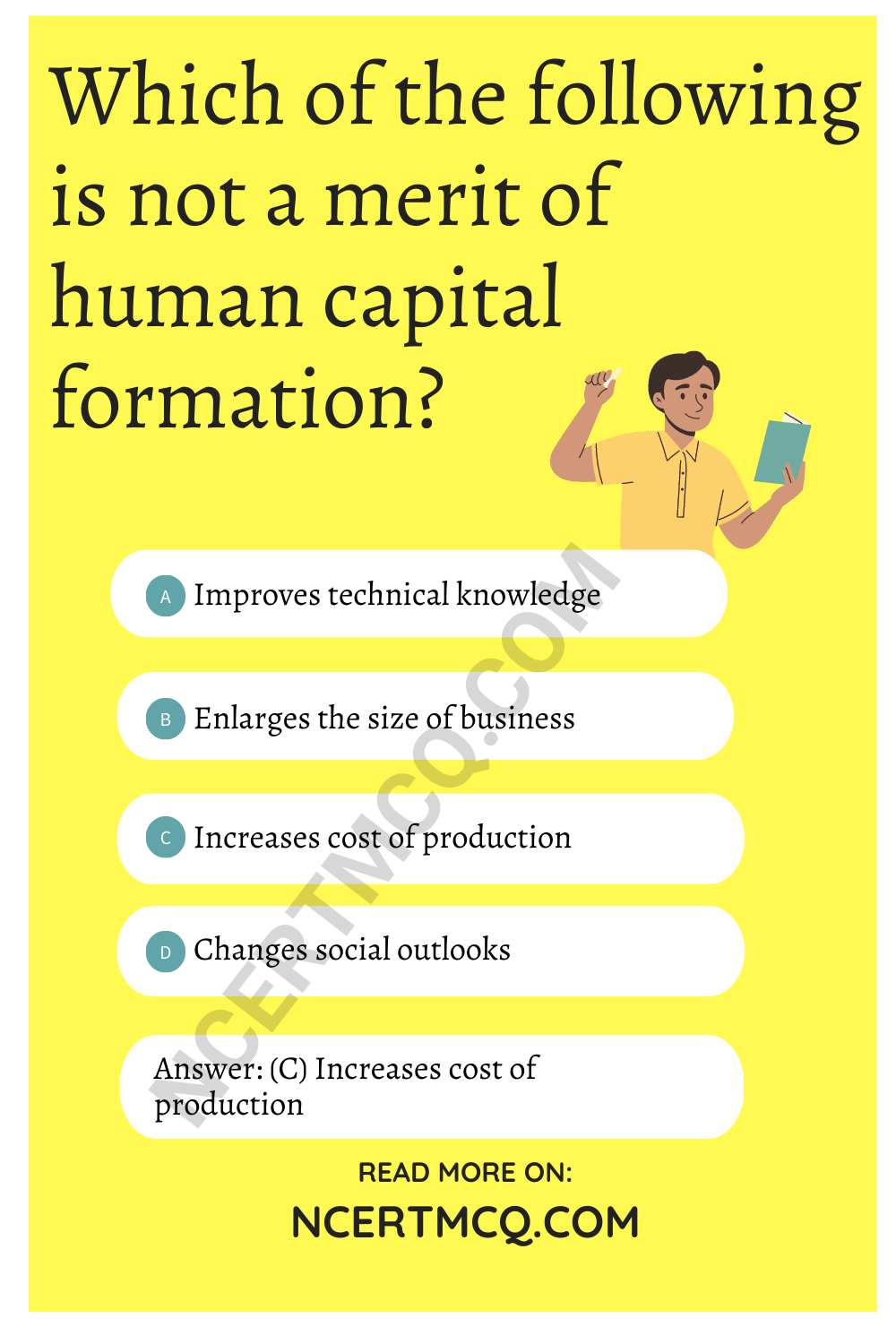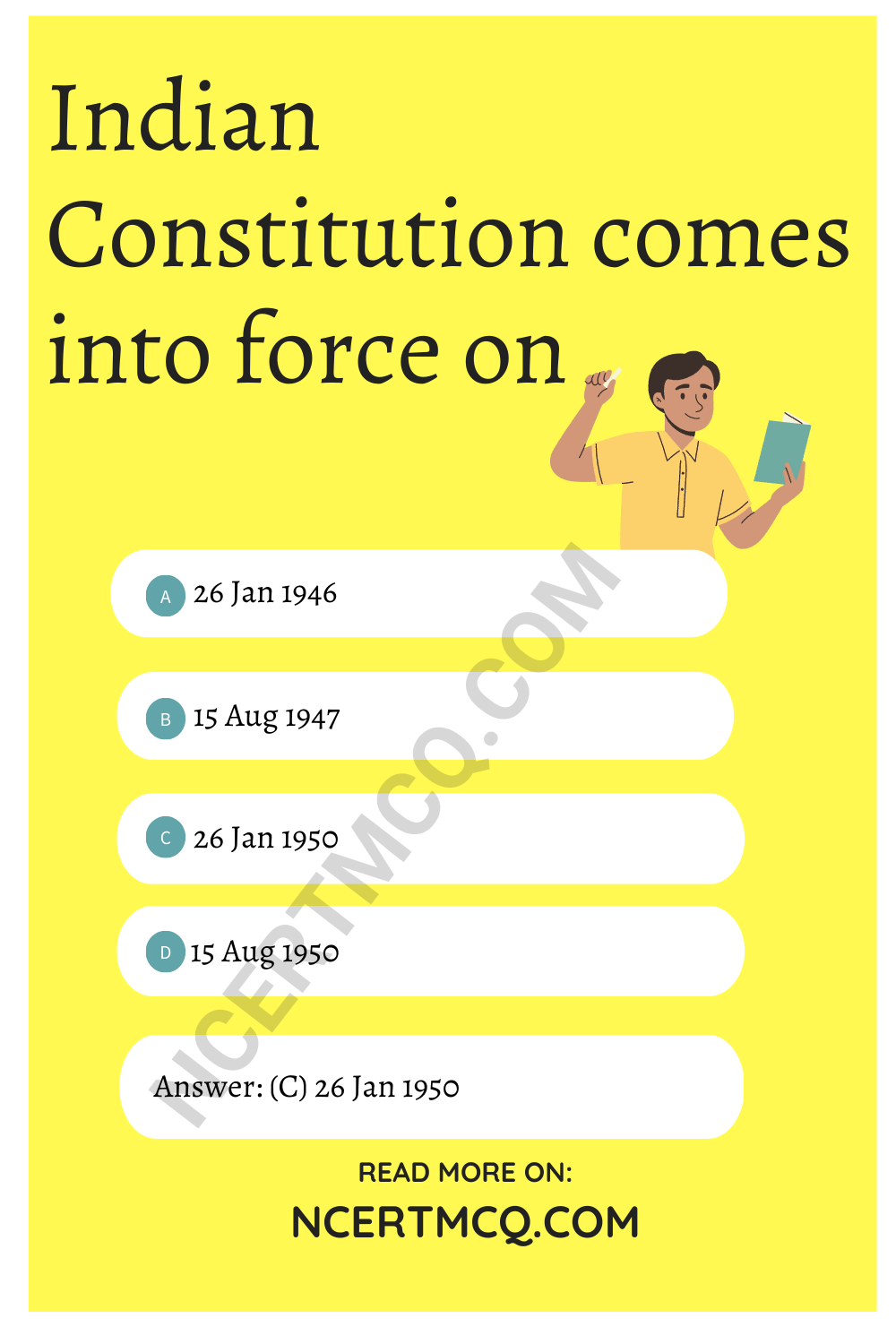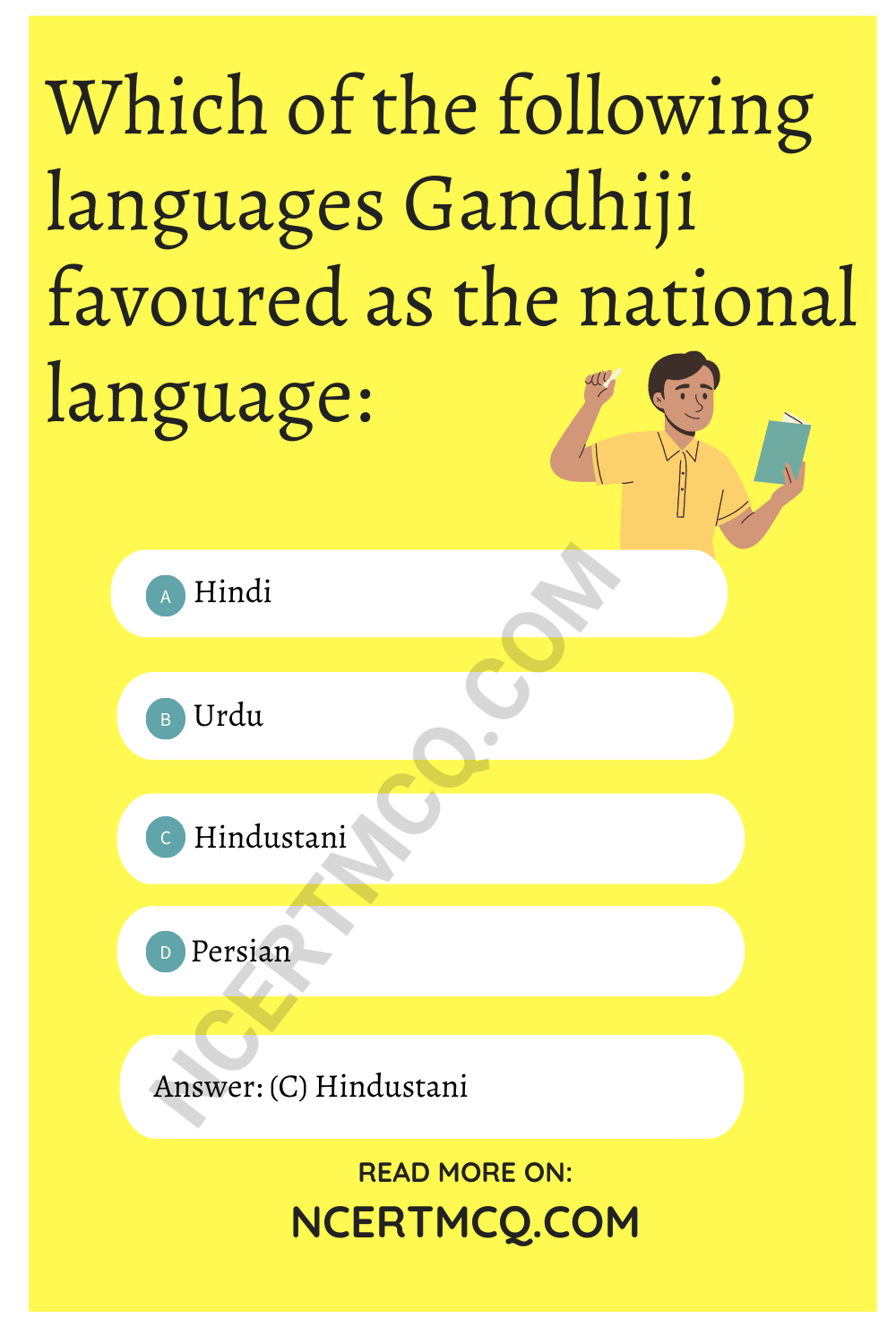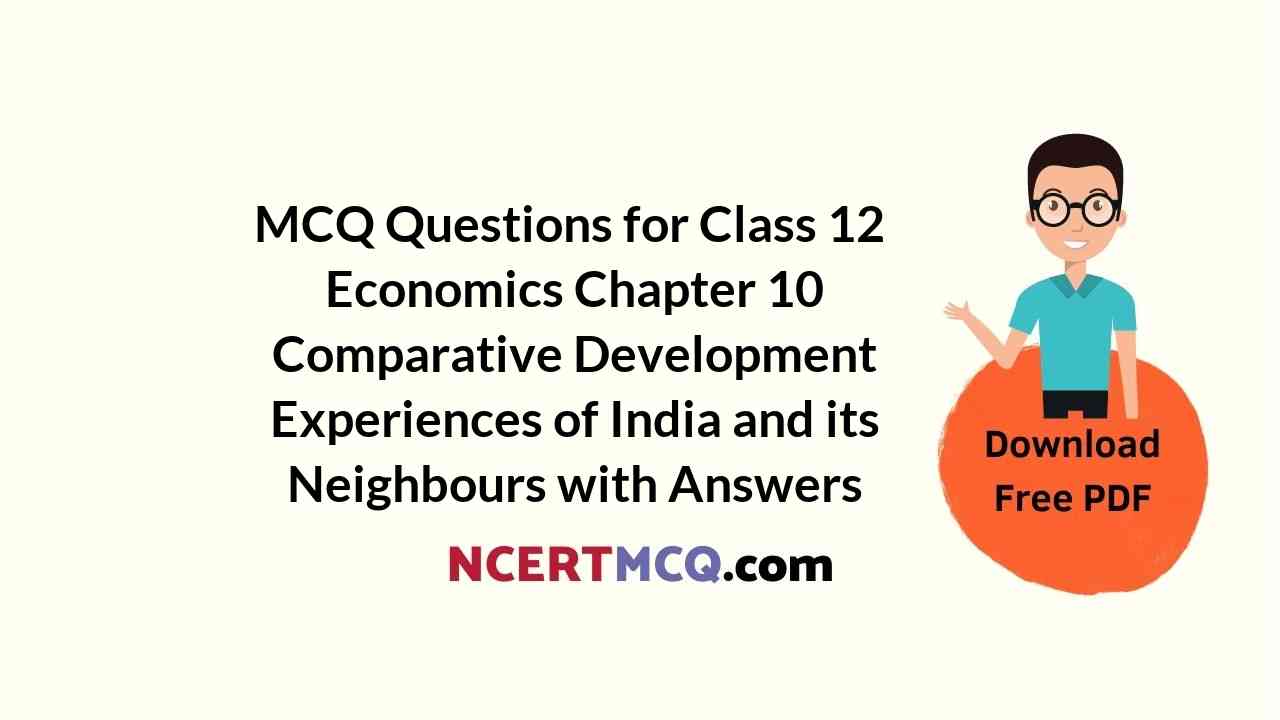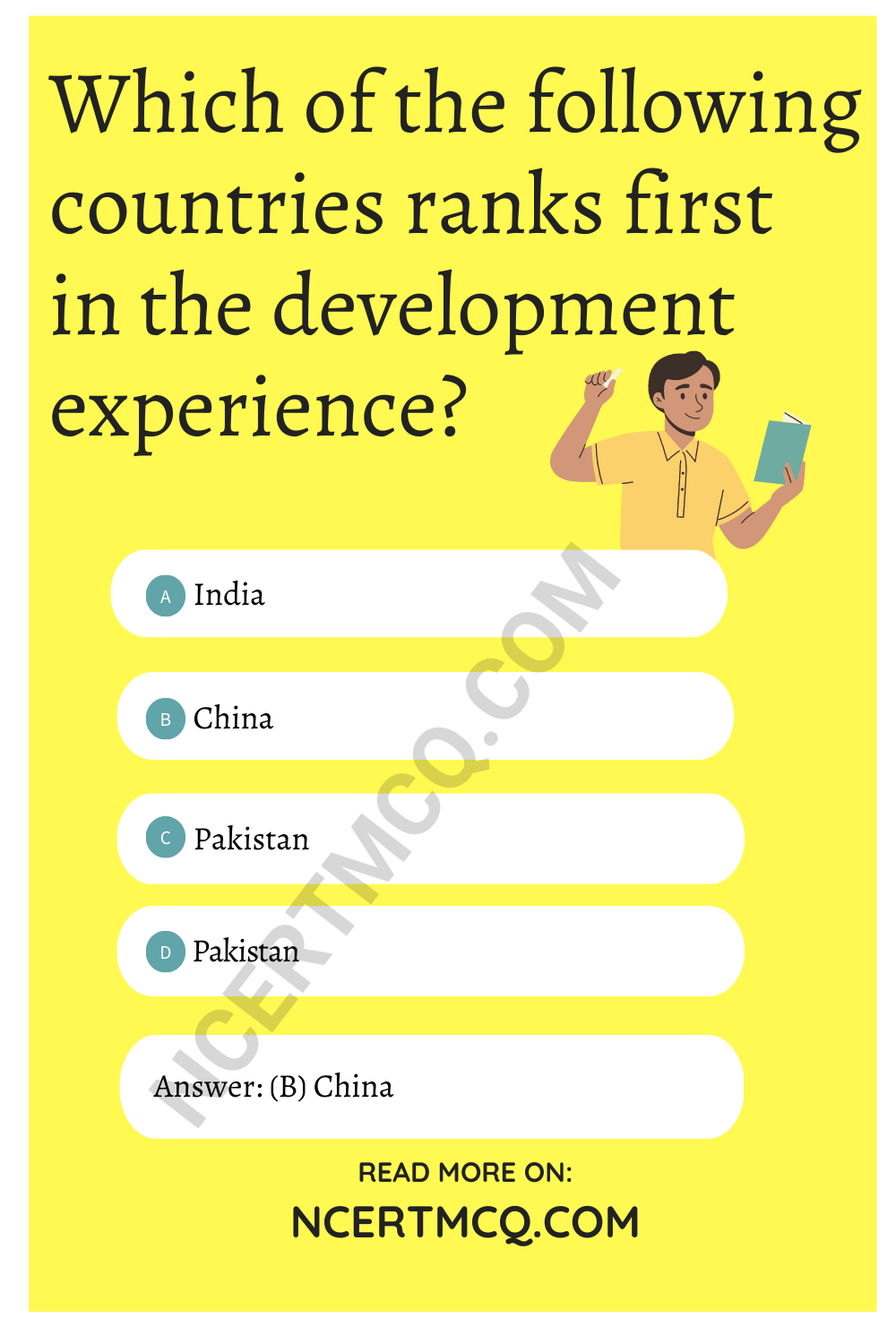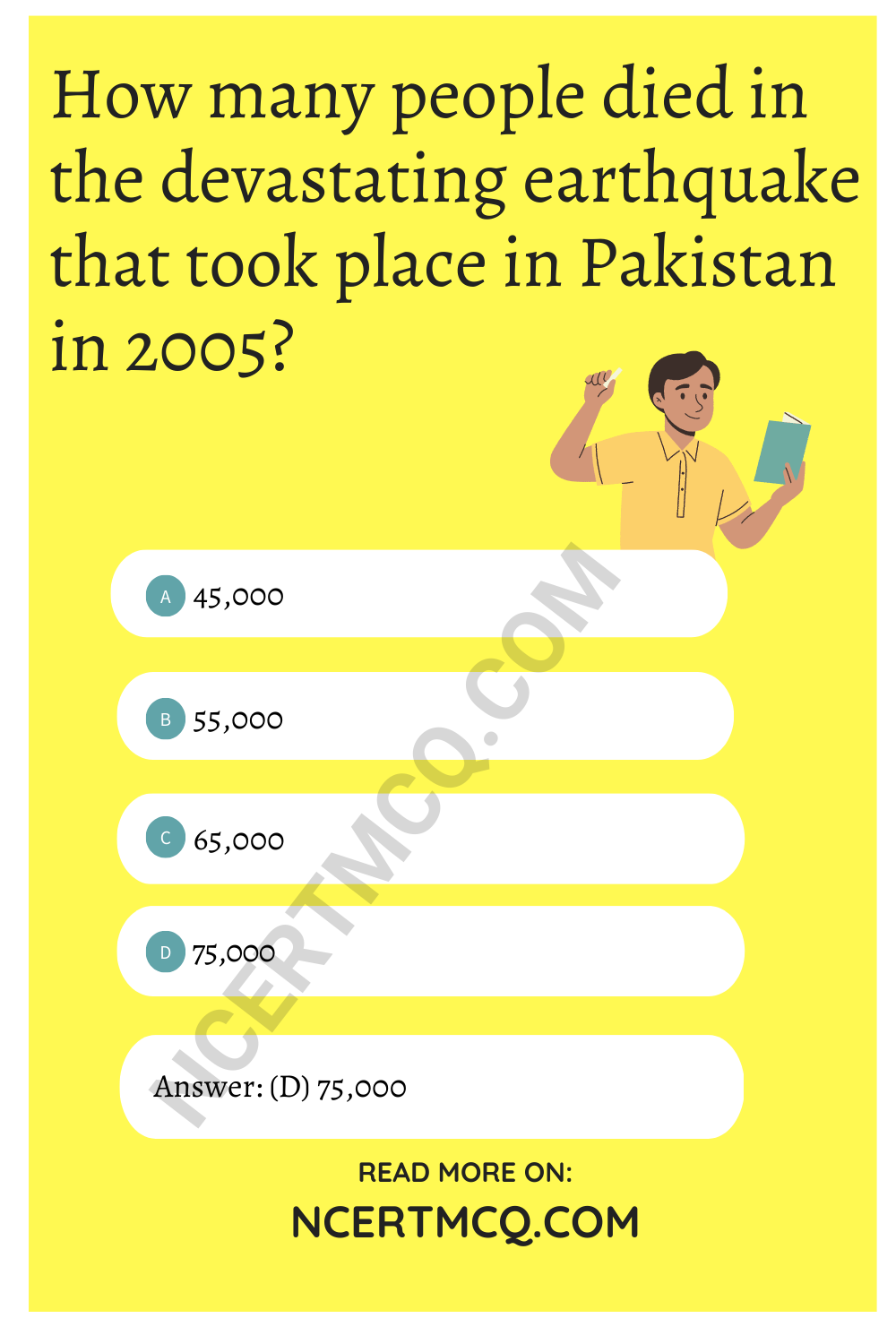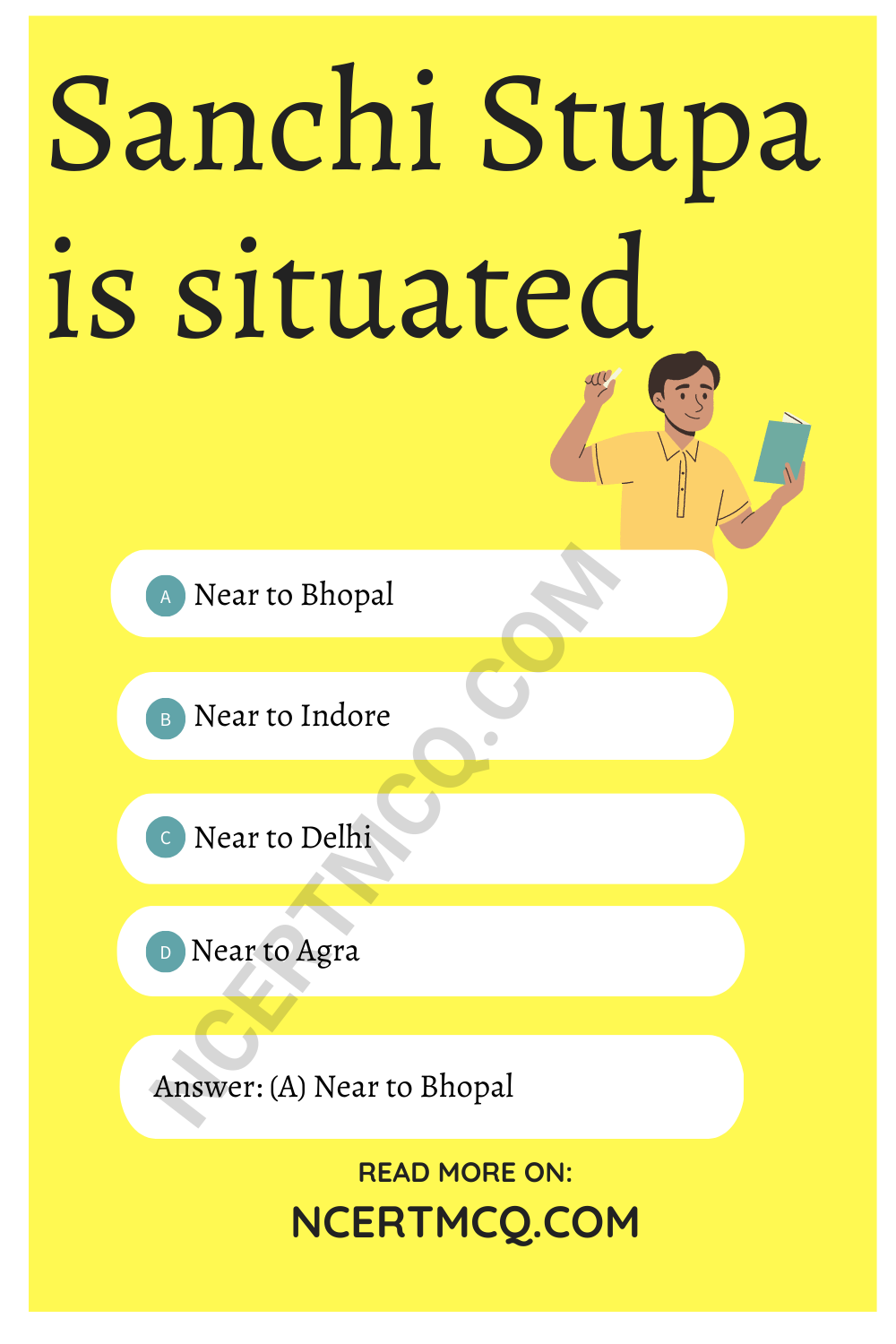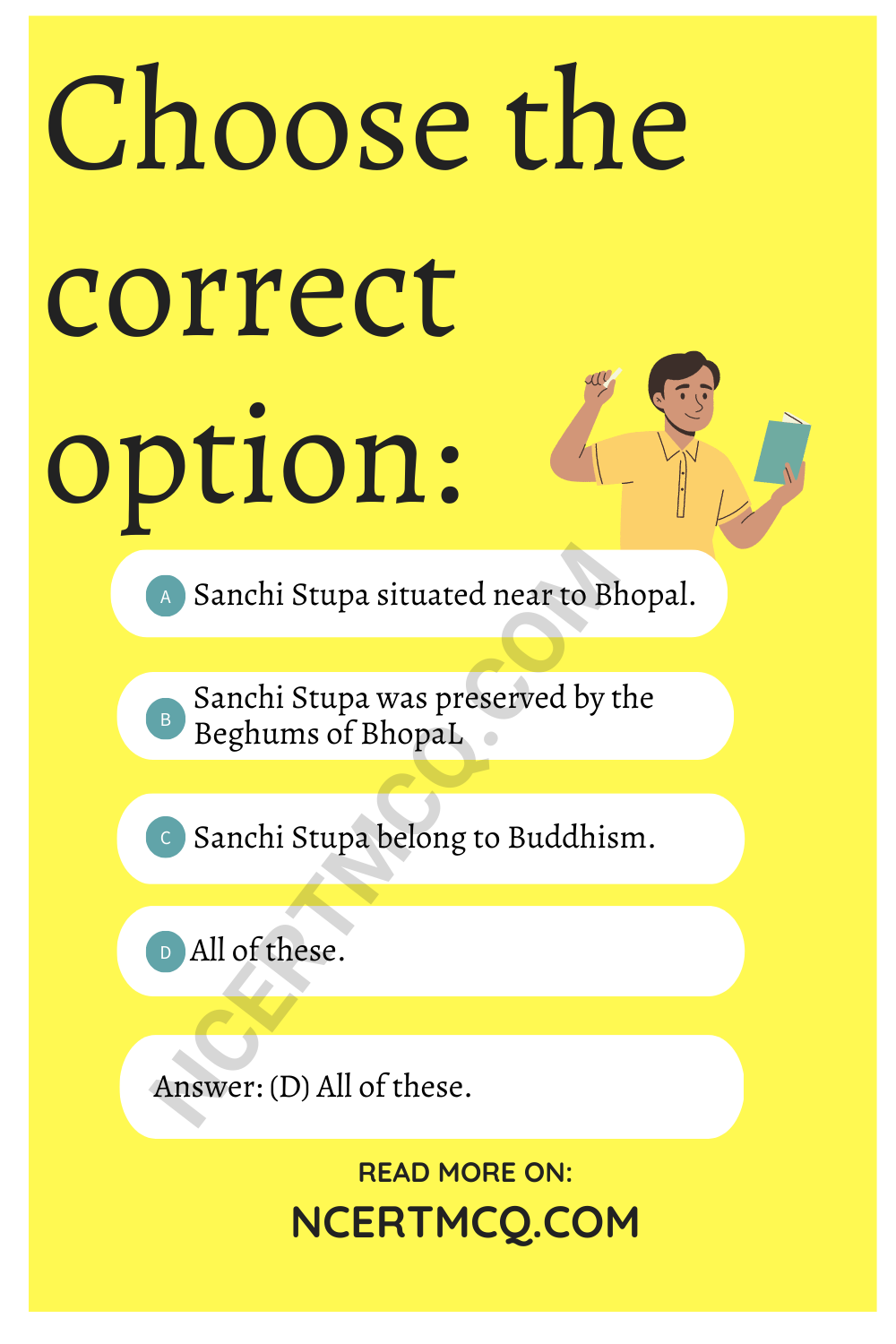Check the below NCERT MCQ Questions for Class 12 Economics Chapter 6 Rural Development with Answers Pdf free download. MCQ Questions for Class 12 Economics with Answers were prepared based on the latest exam pattern. We have provided Rural Development Class 12 Economics MCQs Questions with Answers to help students understand the concept very well.
Class 12 Economics Chapter 6 Rural Development MCQ With Answers
Economics Class 12 Chapter 6 MCQs On Rural Development
I. Choose the correct alternative.
Rural Development Class 12 MCQ Chapter 6 Question 1.
Which among the following is an initiative taken for the development of rural India?
(A) Human Capital Formation
(B) Land Reforms
(C) Poverty Alleviation
(D) All of these
Answer
Answer: (D) All of these
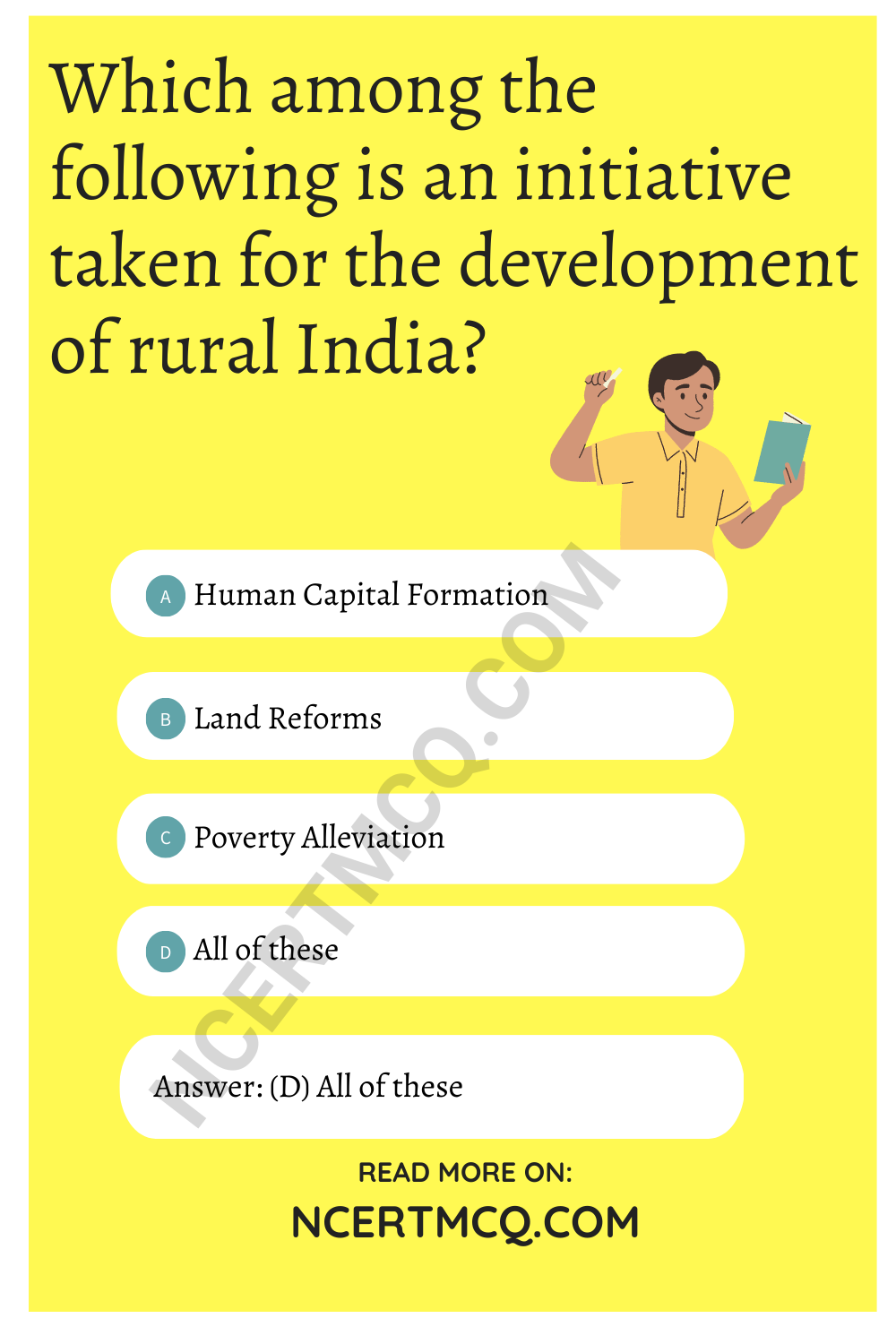
Rural Development MCQ Chapter 6 Question 2.
What was the growth rate of agricultural output during 2007-12?
(A) 32% per annum
(B) 6% per annum
(C) 1.5% per annum
(D) 5% per annum
Answer
Answer: (A) 32% per annum
Rural Development MCQ Class 12 Chapter 6 Question 3.
When was the National Bank for Agricultural and Rural Development set up?
(A) 1962
(B) 1972
(C) 1982
(D) 1992
Answer
Answer: (C) 1982
Rural Development Class 12 MCQ Questions Chapter 6 Question 4.
Which of the following is an institutional source of rural credit?
(A) Moneylenders
(B) Regional Rural Banks
(C) Traders
(D) Landlords
Answer
Answer: (B) Regional Rural Banks
MCQ Of Rural Development Class 12 Chapter 6 Question 5.
Which source of credit had emerged to fully integrate the formal credit system into the overall rural social and community development?
(A) Self-help Groups
(B) Regional Rural Banks
(C) Commercial Banks
(D) Land Development Banks
Answer
Answer: (A) Self-help Groups
MCQ On Rural Development Class 12 Chapter 6 Question 6.
Which among the following is a process that involves the assembling, storage, processing, transportation, packaging, grading, and distribution of different agricultural commodities across the country?
(A) Agricultural Management
(B) Agricultural Banking
(C) Agricultural Diversification
(D) Agricultural Marketing
Answer
Answer: (D) Agricultural Marketing
Class 12 Rural Development MCQ Chapter 6 Question 7.
Which Indian state has been held as a success story in the efficient implementation of milk cooperatives?
(A) Punjab
(B) Gujarat
(C) Uttar Pradesh
(D) West Bengal
Answer
Answer: (B) Gujarat
Class 12 Economics Rural Development MCQ Chapter 6 Question 8.
What is the name of the vegetable and fruit market in Andhra Pradesh?
(A) Apni Mandi
(B) Hadaspar Mandi
(C) Rythu Bazars
(D) Uzhavar Sandies
Answer
Answer: (C) Rythu Bazars
Rural Development MCQ Questions And Answers Chapter 6 Question 9.
How much do the “inland sources” contribute to the total fish production in India?
(A) 64 percent
(B) 39 percent
(C) 50 percent
(D) 75 percent
Answer
Answer: (A) 64 percent
Rural Development Class 12 MCQs Chapter 6 Question 10.
Which status has been accorded to the retail chains and supermarkets for selling organic food?
(A) Eco Status
(B) Sustainable Status
(C) Nutritional Status
(D) Green Status
Answer
Answer: (D) Green Status

II. Fill in the blanks with the correct answer.
MCQs Of Rural Development Chapter 6 Question 1.
________ once said that the real progress of India did not mean simply the growth and expansion of industrial urban centres but mainly the development of the villages.
Answer
Answer: Mahatma Gandhi
MCQ Of Chapter Rural Development Class 12 Chapter 6 Question 2.
During 2007-12, agriculture output has grown at ________
Answer
Answer: 3.2 percent
MCQs On Rural Development Chapter 6 Question 3.
At the time of independence, moneylenders and traders _________ small and marginal farmers and landless labourers.
Answer
Answer: exploited
Question 4.
The _______ was a harbinger of major changes in the credit system.
Answer
Answer: green revolution
Question 5.
By March 2003, _______ SHGs had been provided credit by the banking system.
Answer
Answer: 7 lakh
Question 6.
More than 10 percent of goods produced in farms are wasted due to lack of _______ (storage/transportation facilities)
Answer
Answer: storage
Question 7.
The alternate marketing channels in Punjab, Haryana, and Rajasthan are known as ________
Answer
Answer: Apni Mandi
Question 8.
Much of the agricultural employment activities are concentrated in the ________ season.
Answer
Answer: Kharif
Question 9.
Cattle and buffalo account for _______ of India’s total livestock in 2007.
Answer
Answer: 26 percent
Question 10.
________ relies heavily on chemical fertilizers and toxic pesticides.
Answer
Answer: Conventional farming
III. State whether the following statements are true or false.
Question 1.
Rural development mostly depends upon the development of agriculture.
Answer
Answer: True
Question 2.
Farmers borrow from various sources to meet their initial investment on seeds, fertilizers, implements, and other family expenses.
Answer
Answer: True
Question 3.
Institutional sources of credit include moneylenders, traders, employers, relatives, and friends.
Answer
Answer: False
Question 4.
The major achievement of rural banking over the years has been the effective recovery of loans.
Answer
Answer: False
Question 5.
Self-help groups have helped in the empowerment of women.
Answer
Answer: True
Question 6.
The current infrastructure facilities are sufficient to meet the growing demand in rural agricultural marketing.
Answer
Answer: False
Question 7.
At present, the livestock sector provides alternate livelihood options to over 70 million small and marginal farmers and landless labourers.
Answer
Answer: True
Question 8.
Horticulture is a branch of agriculture-related to the management and care of farm animals such as cattle, sheep, pigs, and goats.
Answer
Answer: False
Question 9.
Chemical-based fertilizers and pesticides used in agriculture are beneficial for the natural eco-systems.
Answer
Answer: False
Question 10.
The use of eco-friendly technologies such as organic farming is essential for sustainable development.
Answer
Answer: True
IV. Match the following.
Question 1.
| Column-I | Column-II |
| 1. Green revolution | (A) 1982 |
| 2. NABARD | (B) 1967-68 |
| 3. Land Reform | (C) Conversion of scattered holdings into unified holdings |
| 4. Consolidation of holding | (D) Institutional reforms |
| 5. Ceiling of landholding | (E) Maximum holding size |
Answer
Answer:
| Column-I | Column-II |
| 1. Green revolution | (B) 1967-68 |
| 2. NABARD | (A) 1982 |
| 3. Land Reform | (D) Institutional reforms |
| 4. Consolidation of holding | (C) Conversion of scattered holdings into unified holdings |
| 5. Ceiling of landholding | (E) Maximum holding size |
We hope the given NCERT MCQ Questions for Class 12 Economics Chapter 6 Rural Development with Answers Pdf free download will help you. If you have any queries regarding CBSE Class 12 Economics Rural Development MCQs Multiple Choice Questions with Answers, drop a comment below and we will get back to you soon.
Class 12 Economics Indian Economic Development with Answers MCQ:
- Indian Economy on the Eve of Independence Class 12 MCQ
- Indian Economy 1950-1990 Class 12 MCQ Questions
- Liberalisation, Privatisation and Globalisation: An Appraisal Class 12 MCQ
- Poverty Class 12 MCQ
- Human Capital Formation in India Class 12 MCQ
- Rural Development Class 12 MCQ
- Employment: Growth, Informalisation and Other Issues Class 12 MCQ
- Infrastructure Class 12 MCQ
- Environment and Sustainable Development Class 12 MCQ
- Comparative Development Experiences of India and its Neighbours Class 12 MCQ
